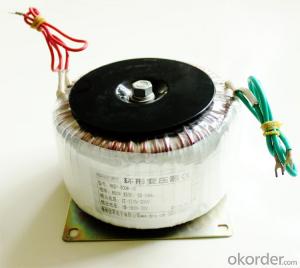Toroidal Solar Inverter
Toroidal Solar Inverter Related Searches
100w Solar Panel With Inverter Best Solar Panel Inverter 5000 Series Cast Aluminum Plate Portable Solar Panel Inverter First Solar Series 6 Module 12 Volt Solar Panel Inverter Plastic Solar Lanterns Buy Solar Panel Inverter Solar Panel Inverter Cost Solar Panel Without InverterHot Searches
Type Of Inverter For Solar Types Of Inverter For Solar Used Solar Inverter For Sale Inverter Size For Solar System Solar Edge Inverter For Sale 5kw Solar Inverter For Sale Solar Inverter For Sale Solar Inverter For Battery Solar Inverter For Split Ac Solar Inverter For Laptop Solar Inverter For Fridge Solar With Inverter Price Solar Inverter With 2 Battery Solar Inverter Price In China Best Solar Inverter In China Solar Inverter Price In Dubai Solar Inverter Price In Uae Solar Inverter Price In Kenya Solar Inverter Price In Kerala Solar Hot Water Collectors For SaleToroidal Solar Inverter Supplier & Manufacturer from China
Okorder.com is a professional Toroidal Solar Inverter supplier & manufacturer, offers integrated one-stop services including real-time quoting and online cargo tracking. We are funded by CNBM Group, a Fortune 500 enterprise and the largest Toroidal Solar Inverter firm in China.Hot Products
FAQ
- The role of a solar inverter in voltage control is to convert the direct current (DC) produced by solar panels into alternating current (AC) that is suitable for use in homes and businesses. Additionally, a solar inverter helps regulate and stabilize the voltage levels to ensure that the generated electricity matches the required voltage for the connected electrical appliances. This helps prevent overvoltage or undervoltage situations, ensuring a safe and efficient energy supply.
- Yes, a solar inverter can be used with a solar-powered CCTV system. A solar inverter is responsible for converting the direct current (DC) produced by solar panels into alternating current (AC) that is used to power electrical devices. In the case of a solar-powered CCTV system, the solar panels generate DC electricity, which is then fed into the solar inverter to convert it into AC power, enabling it to operate the CCTV cameras and other necessary equipment.
- The role of a solar inverter in maintaining system stability is to convert the direct current (DC) generated by the solar panels into alternating current (AC) that can be used to power electrical devices. It also helps regulate the voltage and frequency of the AC output to ensure it matches the requirements of the electrical grid. By effectively managing the power flow and ensuring compatibility with the grid, the solar inverter helps maintain system stability and prevents any disruptions or damage to the entire solar power system.
- A solar inverter plays a crucial role in the overall system reliability of a solar power system. It converts the direct current (DC) generated by solar panels into alternating current (AC) that is compatible with the electrical grid. By efficiently and accurately converting the power, a high-quality solar inverter ensures optimal energy production and grid integration. It also helps in voltage regulation, frequency control, and protection against grid faults. Therefore, a well-functioning and reliable solar inverter significantly enhance the overall system reliability, maximizing the overall efficiency and longevity of the solar power system.
- Yes, there are several safety considerations when installing a solar inverter. First, it is important to ensure that the installation is carried out by a qualified professional who is trained in handling electrical systems. This helps minimize the risk of electric shock or fire hazards. Additionally, proper grounding and insulation must be implemented to prevent electrical faults. It is also crucial to follow the manufacturer's guidelines and local electrical codes to ensure the safe and efficient operation of the inverter.
- Yes, a solar inverter can be connected to the grid. In fact, grid-connected solar inverters are designed to convert the direct current (DC) generated by solar panels into alternating current (AC) that can be fed back into the electrical grid. This allows excess electricity produced by the solar panels to be distributed and used by other consumers, and in some cases, even earn credits or financial compensation through net metering.
- To calculate the maximum power point voltage for a solar inverter, you need to consider the voltage at which the solar panel generates the highest power output. This can be determined by using the voltage-current (V-I) curve of the solar panel and finding the point where the product of voltage and current is maximum. By analyzing this curve, the maximum power point voltage can be identified, which is crucial for optimizing the performance of a solar inverter.













































